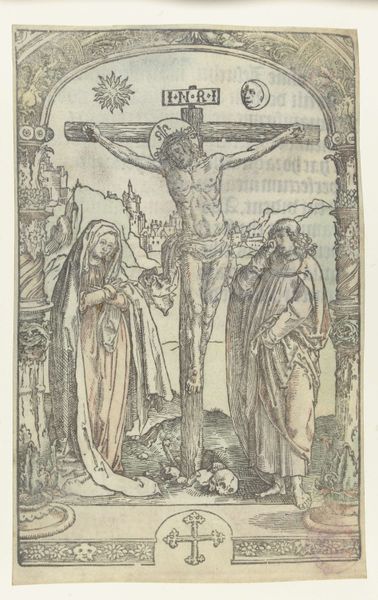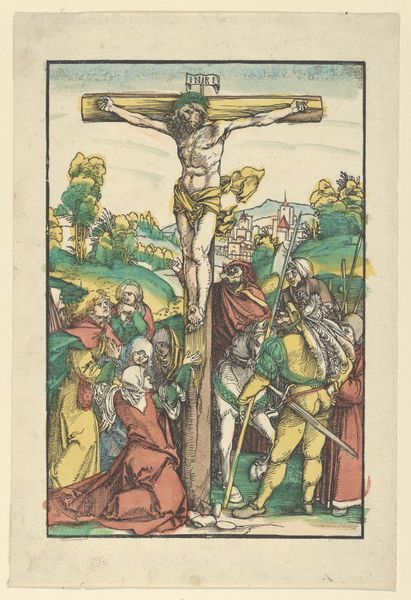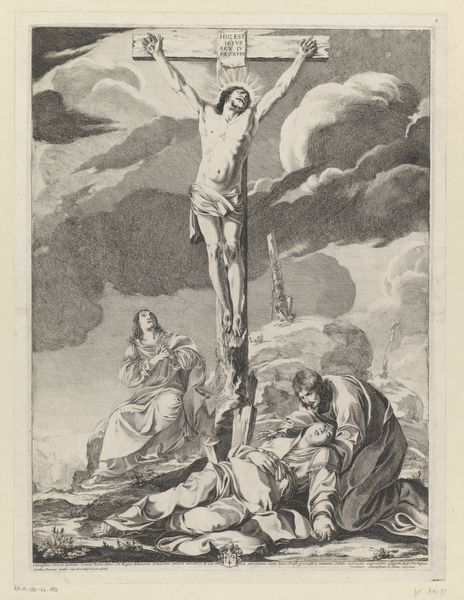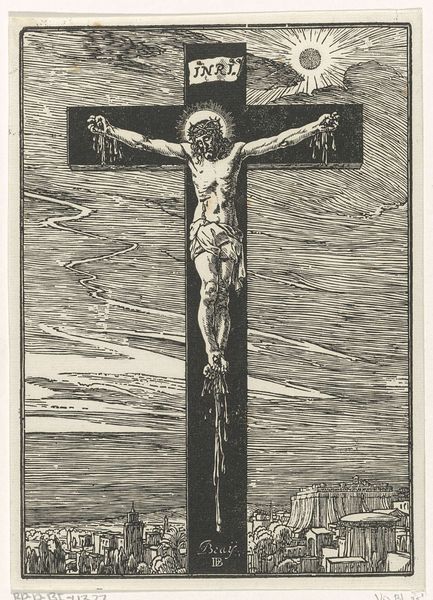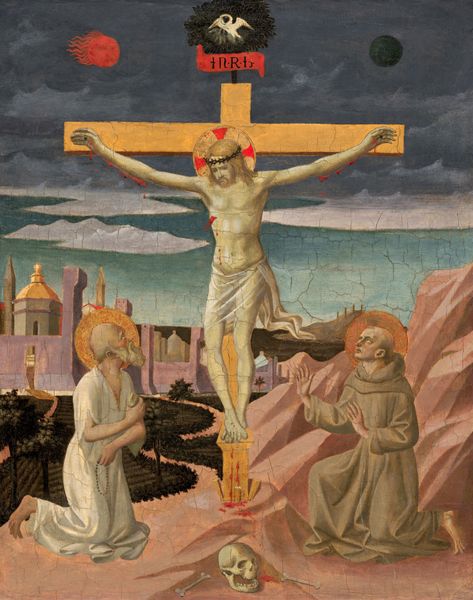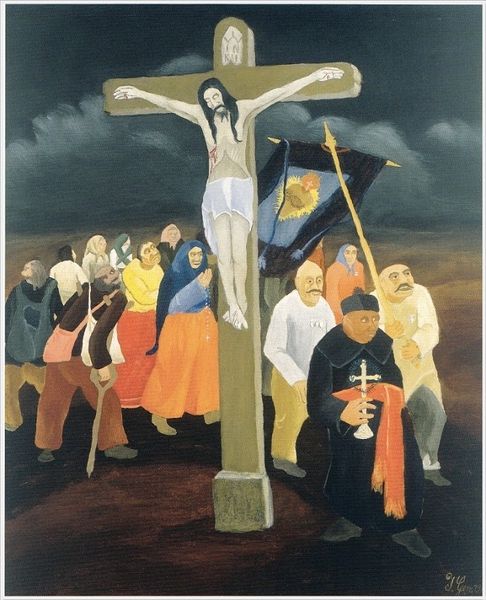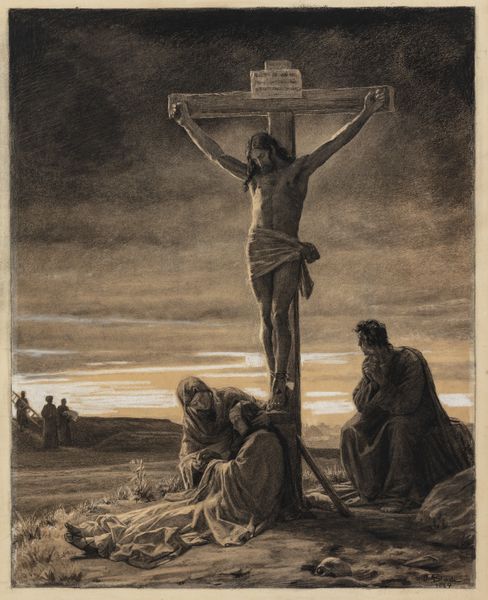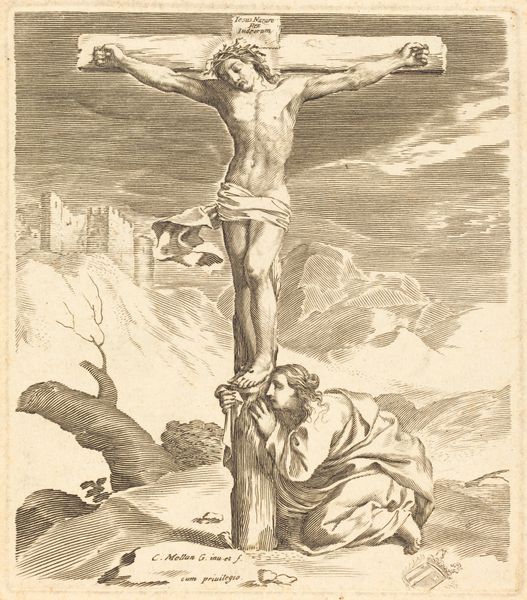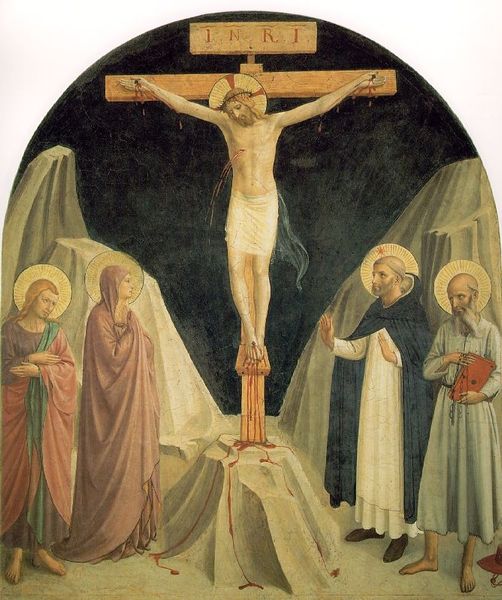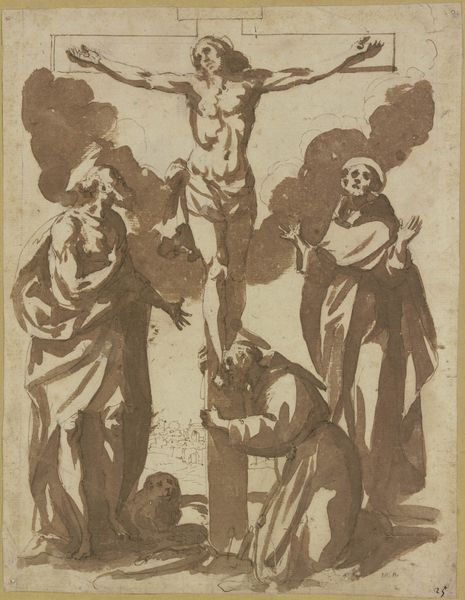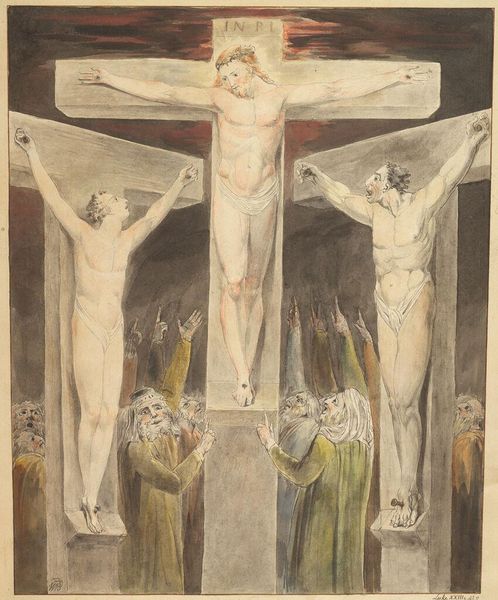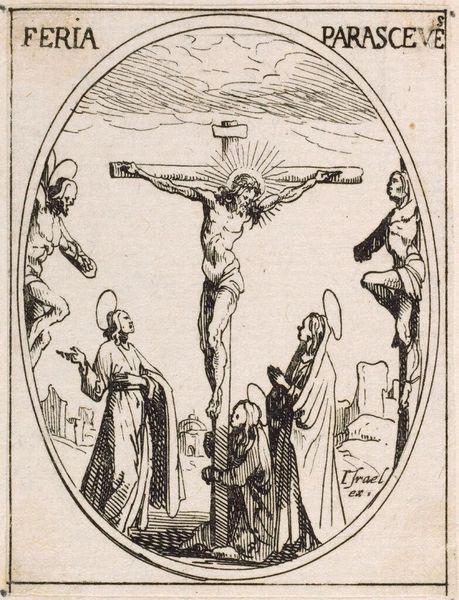
Copyright: Esther Newport,Fair Use
Curator: What a striking piece. Its graphic style almost flattens the tragedy, doesn’t it? Editor: Indeed. It has this strangely muted intensity. Before us is “The Crucifixion,” painted in tempera around 1940. Let's consider how an artist grapples with such an iconic scene during a time marked by unprecedented global conflict. The second World War would be underway. Curator: Exactly. And one cannot ignore the very deliberate visual choices—the stylized figures, almost cartoonish in their sorrow or stoicism, set against that profoundly dark blue. Is this meant to desensitize us, perhaps mirroring the numbing effect of mass violence? Editor: Interesting. Some might interpret this stylization through a theological lens, aligning with iconographic traditions of representing the divine as outside ordinary human experience. But given the context, your read resonates. Note the Roman soldier, almost mechanically observing the scene. It is important to examine his presence, to investigate if this imagery is an allegory for governmental indifference, the political detachment from human suffering. Curator: The political dimension becomes all the more pronounced. But then we're faced with the enduring symbolism of the cross. Is this artwork critiquing specific power structures, or is it questioning the very idea of sacrifice? It’s impossible to uncouple such a loaded religious symbol from histories of colonial violence, isn't it? Editor: Absolutely. The image serves as a reminder of the cross as an instrument of both faith and control. Curator: Thank you. This really gets to the core of what art can do: it makes us reflect on both our history, and how we view these complex issues now. Editor: Precisely, by situating it within a political, religious, and philosophical context. We create the space to view not only art, but a complex global framework.
Comments
No comments
Be the first to comment and join the conversation on the ultimate creative platform.
